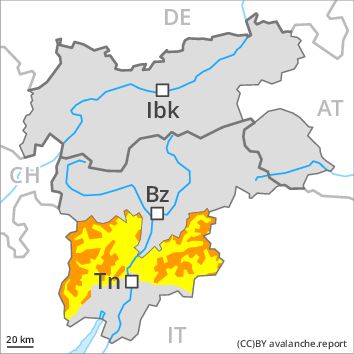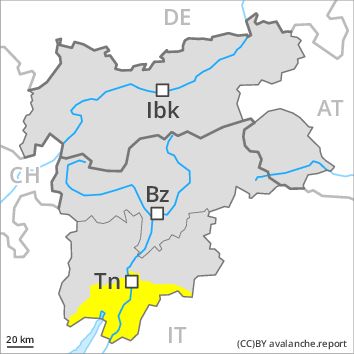Regions
Latemar, Southern Adamello, Primiero - Pale di S. Martino, Adamello - Presanella, Northern Brenta - Peller, Cembra Valley, Western Nonsberg Alps, Southern Brenta, Fassa Valley, Sole, Pejo and Rabbi, Southern Lagorai, Northern Lagorai, Maddalene, Paganella, Pine' - Mocheni Valley

Danger level
Avalanche Problem
New snow above the treeline, N-NE-E-SE-S-SW-W-NW
New snow, N-NE-E-SE-S-SW-W-NW

Significant increase in avalanche danger as a consequence of the fresh snow.
Above approximately 1200 m snow will fall until the evening in some localities. As a consequence of fresh snow and a strong wind, soft wind slabs will form in some places. They are in many cases extensive and to be assessed with care and prudence. Much of the fresh and wind-drifted snow can be released easily in all aspects above approximately 1800 m. The avalanche prone locations are to be found in all aspects, especially in gullies and bowls, and behind abrupt changes in the terrain. Avalanches can be released in the old snowpack especially at transitions from a shallow to a deep snowpack. The avalanche prone locations are barely recognisable because of the poor visibility.
Snowpack
dp 6: cold, loose snow and wind
The fresh snow and wind slabs represent the main danger. Fresh snow is lying mostly on a hard crust. Fresh wind slabs are extensive and in some cases prone to triggering. The snowpack will be subject to considerable local variations.
Tendency
Increase in avalanche danger as a consequence of fresh snow and wind.
